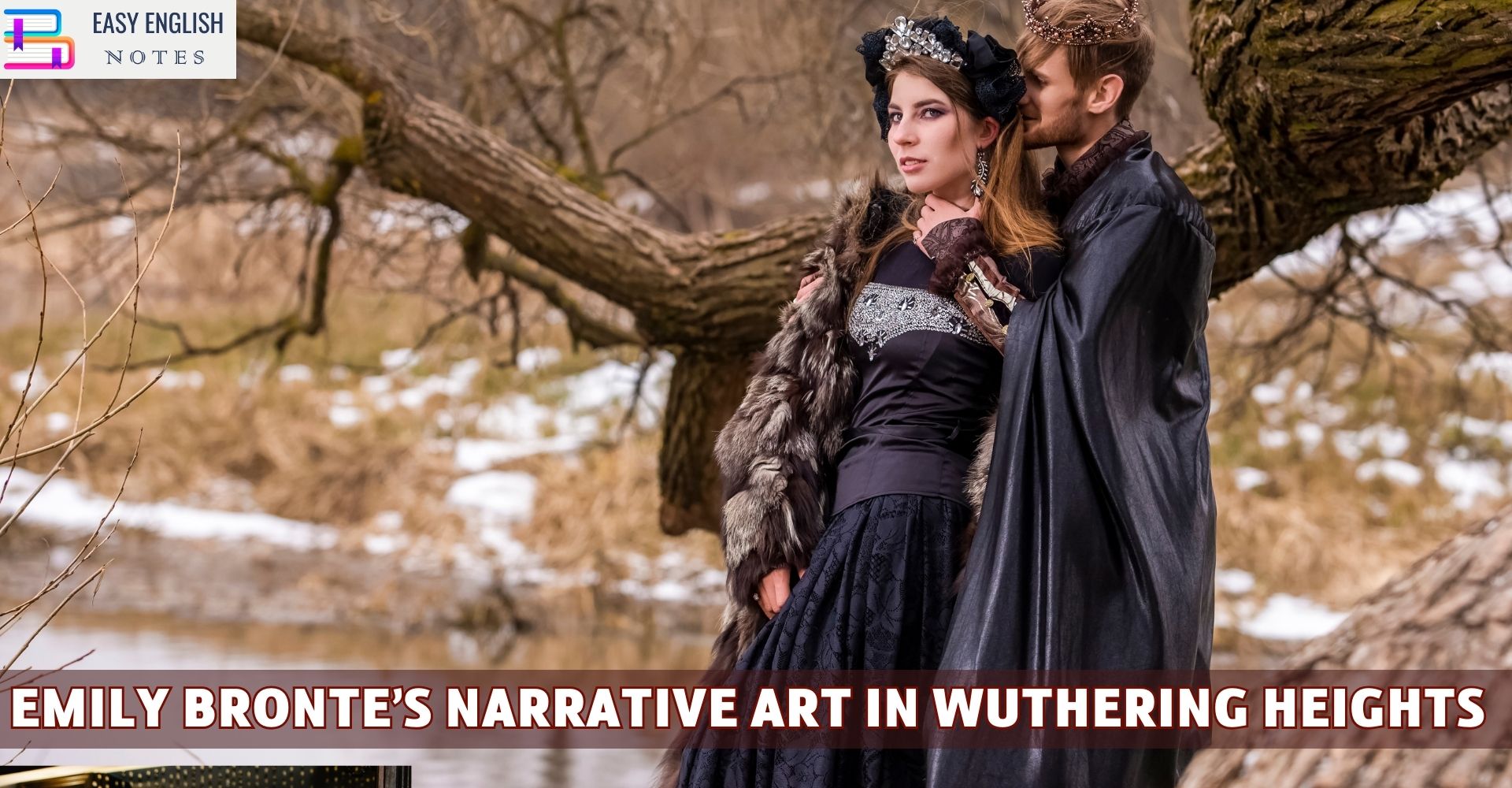Emily Brontë’s novel “Wuthering Heights” is a literary masterpiece known for its intricate narrative structure. Brontë exhibits remarkable narrative skill in the novel, utilizing a variety of narrative techniques that provide depth and complexity to the storytelling. The narrative is not straightforward but rather multi-layered, employing multiple narrators, flashbacks, and even the use of letters. In this exploration, we delve into the fascinating world of Brontë’s narrative method in “Wuthering Heights.”
1. Multiple Narrators: The First-Person Perspective
The novel begins with Mr. Lockwood, a tenant of Heathcliff, as the initial narrator. Lockwood’s narrative serves as the frame story, where he records his experiences as a newcomer to the desolate and eerie setting of Wuthering Heights. He interacts with the inhabitants of the house, including the reserved Heathcliff and the enigmatic Catherine.
However, Lockwood is not the sole narrator. Soon after his arrival, the narrative shifts to Mrs. Dean (Ellen Dean), who becomes the principal narrator of the story. Mrs. Dean takes over the storytelling, offering deeper insights into the characters and events. Through her perspective, the reader gains access to the inner workings of Wuthering Heights and Thrushcross Grange, the characters’ emotions, and the complex relationships that shape the narrative.
2. The Flashback Technique: Traveling Back in Time
One of the distinctive features of Brontë’s narrative method is her use of flashbacks. While Mr. Lockwood’s narrative begins in the present, Mrs. Dean’s storytelling often transports the reader back in time, covering the events of the past forty years. This narrative structure allows the reader to piece together the intricate history of the Earnshaw and Linton families and understand the roots of the tragic love story between Catherine and Heathcliff.
The flashbacks occur organically within the narrative, seamlessly transitioning between the past and the present. This technique is essential for unraveling the mysteries of Wuthering Heights and the characters’ motivations, highlighting Brontë’s narrative mastery.
3. Narrative at Several Removes: Anticipating Conrad
Emily Brontë’s narrative method in “Wuthering Heights” also anticipates the techniques used by later authors like Joseph Conrad, who employed narrative at several removes in his works. In “Lord Jim,” for example, Conrad’s narrator, Marlowe, relays information gathered from various characters, creating a layered narrative.
Similarly, in “Wuthering Heights,” Mrs. Dean serves as the principal narrator, but she often recounts events and conversations that she did not witness firsthand. Instead, she relies on information provided by other characters, such as Isabella Heathcliff and the housekeeper, Lillah. This technique allows Brontë to present a more comprehensive and nuanced view of the story, as different characters provide their perspectives on the same events.
4. The Documentary Method: Incorporating Letters
In addition to the use of multiple narrators and narrative at several removes, Brontë employs the “documentary” method in “Wuthering Heights.” This method involves the incorporation of letters into the narrative to convey important information and developments.
Also Read :
- Compare Hamlet with Macbeth, Othello and other Tragedies
- “The Pardoner’s Tale” is the finest tale of Chaucer
- Prologue to Canterbury Tales – (Short Ques & Ans)
- Confessional Poetry – Definition & meaning
- Line By Line Explanation Of The Poem The Eve of St. Agnes
For instance, Isabella Heathcliff, after her marriage to Heathcliff, sends a lengthy letter to Ellen Dean. In this letter, she describes the events that occurred in her life after her wedding. These letters serve as a form of firsthand accounts, allowing the characters to communicate their experiences and emotions directly to the reader.
5. The Complexity of Characterization
Brontë’s narrative method not only serves to advance the plot but also contributes to the complexity of characterization in “Wuthering Heights.” Each narrator provides a unique perspective on the characters, revealing their inner thoughts, motivations, and flaws.
Mr. Lockwood, as an outsider, offers an initial impression of the inhabitants of Wuthering Heights. However, it is through Mrs. Dean’s narrative that the characters, particularly Heathcliff and Catherine, are fully fleshed out. The reader gains insight into the tragic love story that defines the novel and the destructive forces that shape the characters’ lives.
6. Themes and Symbolism: Unveiling Layers of Meaning
Brontë’s narrative method also allows for the exploration of themes and symbolism in “Wuthering Heights.” The shifting perspectives and use of flashbacks enable a deeper examination of themes such as love, revenge, social class, and the destructive power of unfulfilled desires.
The novel’s complex structure mirrors the tumultuous relationships and emotions of its characters. The reader is challenged to piece together the various narrative threads to uncover the layers of meaning beneath the surface of the story.
7. Reader Engagement: An Interactive Journey
“Wuthering Heights” demands active engagement from its readers. The shifting narrators and timelines require readers to connect the dots, forming a comprehensive understanding of the plot and characters. This interactive storytelling approach invites readers to become participants in uncovering the novel’s mysteries.
8. Conclusion: Emily Brontë’s Narrative Mastery
In “Wuthering Heights,” Emily Brontë showcases her narrative mastery by employing a multi-layered and complex storytelling method. Through multiple narrators, flashbacks, narrative at several removes, and the use of letters, she creates a rich and immersive reading experience. Brontë’s innovative narrative techniques not only advance the plot but also deepen the characterization and themes of the novel, making “Wuthering Heights” a timeless classic that continues to captivate readers and scholars alike. Emily Brontë’s narrative method in “Wuthering Heights” is a testament to her literary genius and her ability to craft a narrative that transcends time and place.
PLEASE HELP ME TO REACH 1000 SUBSCRIBER ON MY COOKING YT CHANNEL (CLICK HERE)











